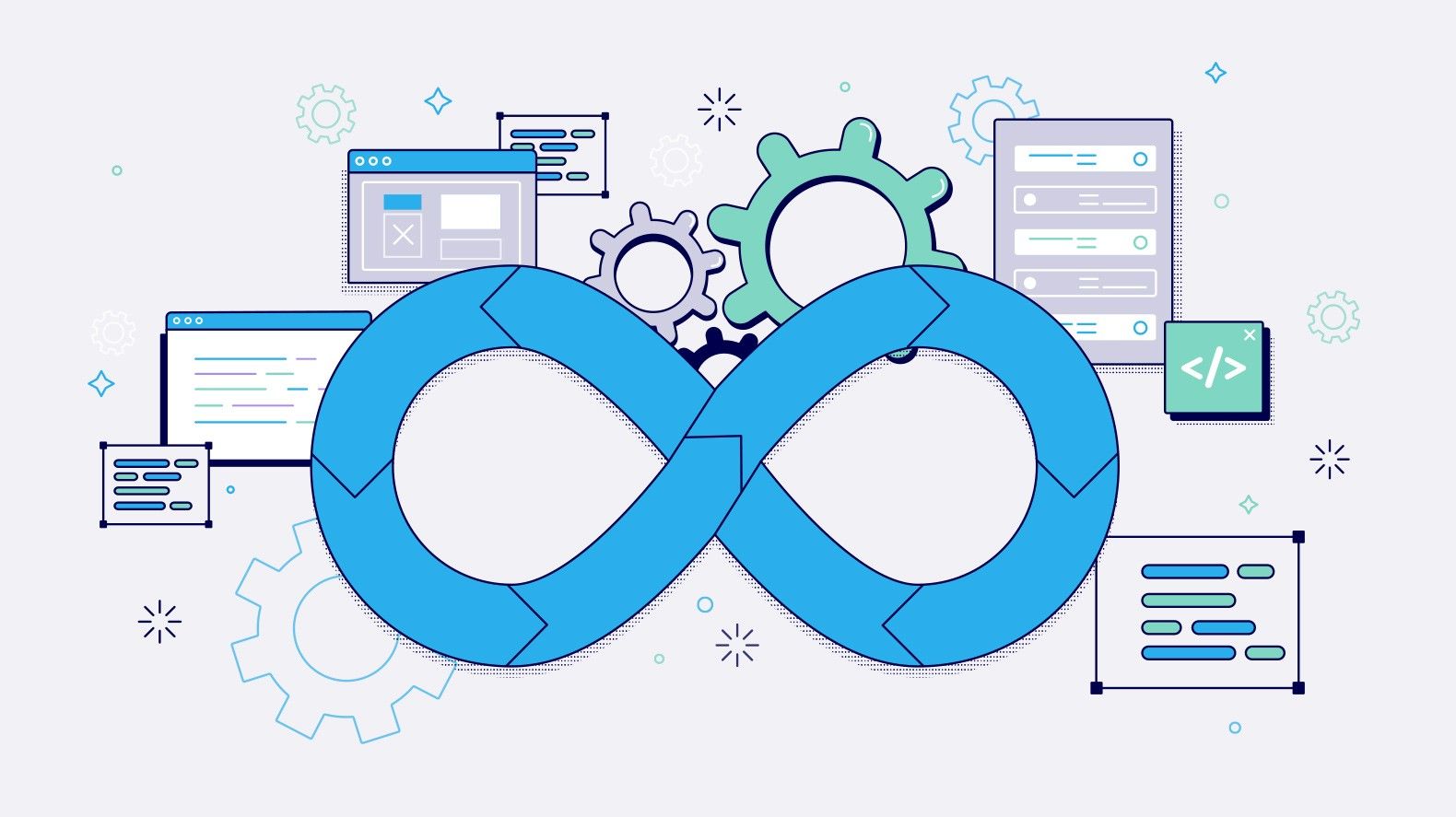DevSecOps Best Practices Every Team Should Know

In today’s digital landscape, software development cycles are becoming shorter, and security threats are ever-evolving. Therefore, it has never been more critical than now to integrate security into the development process.
The DevSecOps technique places a strong emphasis on the cooperation of the operations, security, and development teams throughout the software development lifecycle. Hence offering a proactive approach to addressing security concerns.
In this comprehensive guide, we explore the DevSecOps best practices every team should follow for effective implementation and management. So, read on to learn everything about the DevSecOps methodology, its workflow, and how to implement it.
Understanding DevSecOps
DevSecOps is an evolution of the DevOps culture. It places a strong emphasis on incorporating security procedures early on in the DevOps process. On the other hand, DevSecOps encourages a proactive and continuous approach to security, in contrast to traditional security methods, which frequently result in last-minute corrections and development process delays.
Therefore, by embedding security practices throughout the development lifecycle, organizations can identify and mitigate security vulnerabilities early. Moreover, it also reduces the risk of security breaches and ensures the delivery of secure and reliable software.
DevSecOps Best Practices
Let’s take a look at the DevSecOps best practices that can help you build a strong foundation for smooth software delivery and enhanced security.
Implementing Security as Code
Integrating security into the code from the beginning of the development process is essential for building secure software. Teams may find and fix vulnerabilities early in the development lifecycle by using tools and automation to add security measures straight into the source. Thereupon, this approach, known as Security as Code, enables developers to address security concerns seamlessly without disrupting the development flow.
Continuous Security Testing
Traditional security testing methods, such as periodic scans and manual assessments, are no longer sufficient in today’s dynamic development environments. DevSecOps advocates for continuous security testing throughout the development pipeline, including automated vulnerability scanning, static and dynamic code analysis, and penetration testing. Therefore, teams may ensure the delivery of secure code by incorporating security testing into the CI/CD pipeline and identifying and resolving security vulnerabilities in real time.
Shift-Left Approach
The shift-left methodology enables teams to address security issues at their root by introducing security procedures early in the development process. Thereby, by integrating security controls into the development environment, such as IDE plugins for code analysis and security-focused design reviews, teams can identify and mitigate vulnerabilities during the coding phase. This proactive approach not only reduces the cost of addressing security issues but also minimizes the risk of security breaches in production.
Collaboration and Communication
A successful DevSecOps deployment requires effective collaboration and communication across the development, security, and operations teams. Through the dismantling of organizational silos and the promotion of a shared responsibility culture, teams may collaborate to ascertain security requirements, put security controls in place, and quickly address security events. As a result, tools such as shared dashboards, chat channels, and cross-functional meetings facilitate collaboration and ensure that security remains a priority throughout the development lifecycle.
Compliance and Governance
Compliance with industry regulations and internal security policies is a critical aspect of DevSecOps. By integrating compliance checks into the CI/CD pipeline and automating the enforcement of security policies, teams can ensure that software deployments meet regulatory requirements and internal standards. Additionally, maintaining comprehensive audit trails and conducting regular security assessments help organizations demonstrate compliance and identify areas for improvement.
How to Implement DevSecOps
Now, let’s talk about how to implement DevSecOps. Implementing DevSecOps requires a strategic approach and a commitment to cultural and organizational change. Here are the key steps to implementing DevSecOps in your organization:
Assess Current State
Evaluate your organization’s current development and security practices to identify areas for improvement. Conduct a thorough assessment of existing processes, tools, and workflows to understand the current state of security within your organization.
Define Security Requirements
Define clear security requirements and objectives for your DevSecOps initiative. Furthermore, identify critical assets, potential threats, and compliance requirements to establish a baseline for security practices and controls.
Build a Cross-Functional Team
Assemble a cross-functional team comprising members from the development, security, and operations departments. Make sure that security is prioritized throughout the development lifecycle by cultivating a culture of shared accountability and teamwork.
Implement Automation
Invest in automation tools and technologies to streamline security processes and integrate security controls into the development pipeline. Leverage automation to enforce security policies, conduct continuous security testing, and remediate vulnerabilities in real time.
Monitor and Iterate
Lastly, monitor the effectiveness of your DevSecOps practices continuously and iterate as needed to address emerging security threats and evolving business requirements. Furthermore, collect feedback from stakeholders, track key metrics, and make data-driven decisions to optimize your DevSecOps workflows.
DevSecOps Workflow
The DevSecOps workflow encompasses a series of interconnected processes and practices designed to integrate security into the development lifecycle seamlessly. Here’s an overview of the typical DevSecOps workflow:
Planning and Design
Teams work together throughout the planning and design stage to specify security needs, recognize possible risks, and establish security measures. Accordingly, this phase lays the foundation for integrating security into the development process from the outset.
Development
In the development phase, developers write code and incorporate security best practices into their workflows. As a result, security-focused coding guidelines, code reviews, and automated testing help ensure that code is secure and free from vulnerabilities before deployment.
Testing and Validation
Security testing and validation occur throughout the development lifecycle, with automated tools scanning code for vulnerabilities, conducting penetration tests, and simulating real-world attacks. Continuous testing helps identify and remediate security issues early, certainly reducing the risk of security breaches in production.
Deployment and Operations
During deployment and operations, security controls are enforced to protect software assets in production. Basically, continuous monitoring, incident response, and security updates ensure that systems remain secure and resilient against emerging threats.
DevSecOps Requirements
To effectively implement DevSecOps, organizations must meet several key DevSecOps requirements:
Cultural Shift
DevSecOps requires a cultural shift towards collaboration, shared responsibility, and a focus on security throughout the development lifecycle. In any case, organizations must foster a culture of security awareness and empower teams to prioritize security in their workflows.
Automation and Tooling
Automation is essential for streamlining security processes and integrating security controls into the development pipeline. Therefore, organizations must invest in automation tools and technologies to automate security testing, enforce security policies, and remediate vulnerabilities efficiently.
Continuous Integration/Continuous Deployment (CI/CD)
CI/CD pipelines enable organizations to automate the build, test, and deployment processes, thus facilitating the rapid delivery of secure and reliable software. Integrating security into the CI/CD pipeline ensures that security is not overlooked during the development process.
Security Training and Education
Providing developers, security professionals, and operations teams with ongoing training and education is crucial for building a strong DevSecOps culture. In order to guarantee that team members possess the abilities and know-how required for effective implementation of security standards, companies really have to fund security training initiatives.
DevSecOps Team Structure
The success of DevSecOps relies heavily on the collaboration and coordination of cross-functional teams with diverse skill sets. A well-structured DevSecOps team ensures that security is integrated seamlessly throughout the development lifecycle. So, here’s an in-depth look at the roles and responsibilities within a typical DevSecOps team structure:
Development Team
The development team plays a central role in the DevSecOps process and is responsible for writing code, implementing security best practices, and integrating security controls into the development pipeline. Key roles within the development team include:
Developers: Developers are responsible for writing clean, efficient, and secure code. They work closely with security and operations teams to ensure that security requirements are met and that code is free from vulnerabilities.
Quality Assurance (QA) Engineers: QA engineers are responsible for testing code for defects and vulnerabilities. They collaborate with developers to ensure that code meets quality standards and that security testing is integrated into the development process.
Security Team
The security team provides expertise in identifying security requirements, conducting risk assessments, and implementing security controls throughout the development lifecycle. Key roles within the security team include:
Security Engineers: Security engineers are responsible for designing, implementing, and maintaining security measures inside the development pipeline. They conduct security assessments, identify vulnerabilities, and work with development and operations teams to remediate security issues.
Security Analysts: Security analysts monitor and analyze security events and incidents, identifying potential threats and vulnerabilities. Hence, they guide security best practices and assist in incident response and forensic analysis.
Compliance Officers: Compliance officers ensure that software deployments meet regulatory requirements and internal security policies. Moreover, they conduct audits, assess compliance risks, and work with development and operations teams to address compliance-related issues.
Operations Team
In order to keep software systems safe, scalable, and resistant to cyberattacks, the operations team must deploy and manage them in production. Key roles within the operations team include:
DevOps Engineers: DevOps engineers are responsible for automating the deployment and management of software systems. They work closely with development and security teams to integrate security into the CI/CD pipeline and ensure the smooth operation of production environments.
System Administrators: System administrators are responsible for configuring and managing IT infrastructure, including servers, networks, and databases. Additionally, they collaborate with development and security teams to implement security controls and monitor system performance.
Incident Response Team: The incident response team is responsible for detecting, responding to, and mitigating security incidents in real time. Additionally, they coordinate with development and security teams to investigate security breaches, contain the impact, and implement corrective measures.
Bottom Line
Finally, by stressing the early incorporation of security practices into the development lifecycle, DevSecOps signifies a paradigm change in software development. That is why, by adopting DevSecOps best practices, organizations can build secure and resilient software while accelerating the delivery of innovative solutions to the market.
In other words, by implementing security as code, embracing automation, and prioritizing security throughout the development process, teams can effectively mitigate security risks and ensure the integrity and confidentiality of their software assets. However, with a strategic approach and a commitment to continuous improvement, organizations can reap the benefits of DevSecOps infrastructure and cloud services to stay ahead of evolving security threats in today’s digital landscape.
